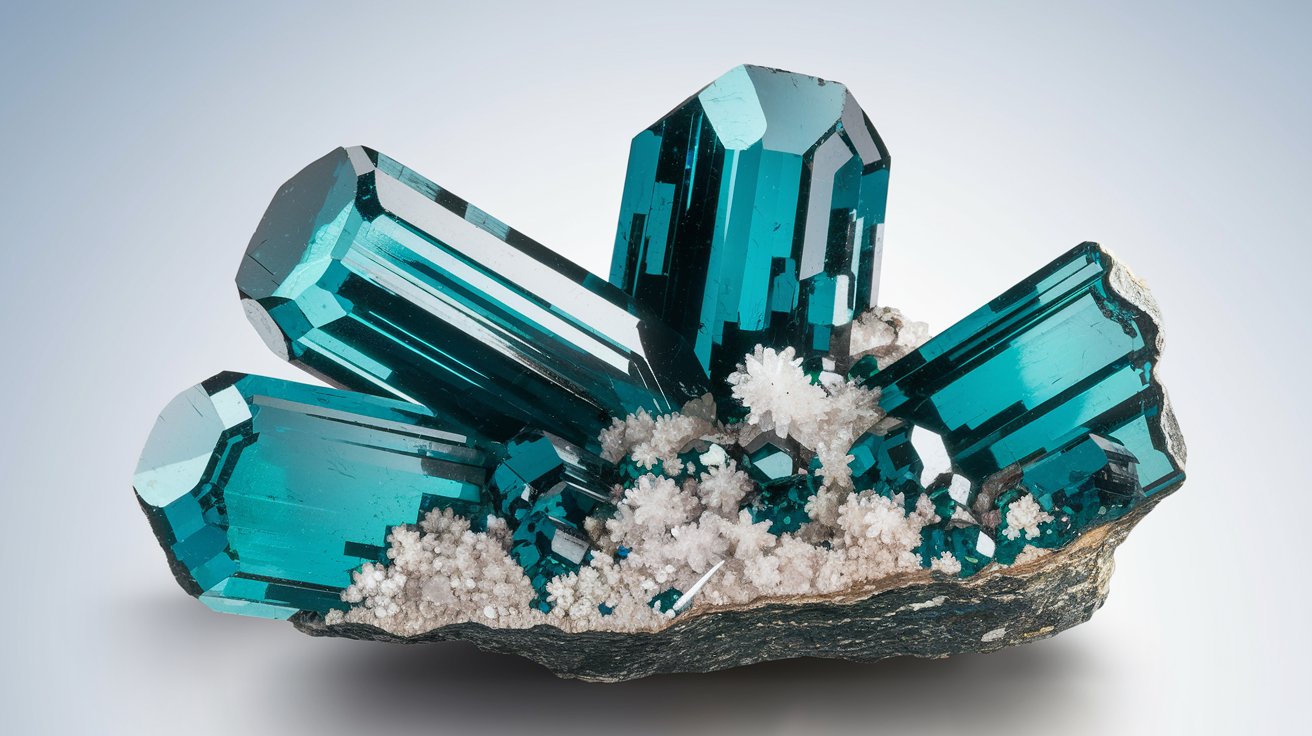
Penikisite might not be a household name, but this mineral has some pretty cool facts that make it worth knowing. Found in phosphate-rich environments, penikisite is a rare gem for geologists and mineral enthusiasts. Its unique crystal structure and vibrant colors make it a standout in any collection. But what exactly makes penikisite so special? Penikisite is not just about looks; it has a fascinating chemical composition and formation process. Whether you're a budding geologist or just curious about the natural world, these 30 facts about penikisite will give you a deeper appreciation for this intriguing mineral. Get ready to be amazed by the wonders of penikisite!
Key Takeaways:
- Penikisite is a rare green mineral found in specific rocks, and it's named after the region where it was first discovered. Its unique color and crystal structure make it a prized addition to mineral collections.
- Despite its challenges in study and limited commercial use, Penikisite's rarity and fascinating properties make it a valuable and intriguing mineral for collectors and researchers alike.
What is Penikisite?
Penikisite is a rare mineral that has intrigued geologists and mineral enthusiasts alike. Found in specific geological settings, it offers a glimpse into the Earth's complex processes.
- Penikisite is a phosphate mineral, which means it contains phosphorus and oxygen in its chemical structure.
- Its chemical formula is CaMgAl(PO4)2(OH)·H2O, indicating the presence of calcium, magnesium, aluminum, phosphate, hydroxide, and water.
- This mineral was first discovered in the Penikis region of Russia, hence its name.
- It typically forms in granitic pegmatites, which are coarse-grained igneous rocks.
- Penikisite is often associated with other phosphate minerals like apatite and monazite.
Physical Properties of Penikisite
Understanding the physical properties of Penikisite can help identify it in the field. These properties include color, hardness, and crystal structure.
- Penikisite usually appears in shades of green, ranging from pale to dark.
- It has a Mohs hardness of 5, making it relatively soft compared to other minerals.
- The mineral forms in monoclinic crystals, which means its crystal structure has three unequal axes with one inclined angle.
- It has a vitreous luster, giving it a glass-like appearance.
- Penikisite's specific gravity ranges from 2.9 to 3.1, which is considered average for minerals.
Geological Occurrence of Penikisite
Penikisite's occurrence is limited to specific geological environments. Knowing where it forms can aid in its discovery and study.
- This mineral is primarily found in granitic pegmatites, which are known for their large crystal sizes.
- It can also occur in hydrothermal veins, where hot, mineral-rich water deposits minerals in cracks and fissures.
- Penikisite has been discovered in regions like Russia, Canada, and the United States.
- It often forms in association with other rare minerals, making its discovery even more exciting for collectors.
- The mineral is typically found in small quantities, adding to its rarity and value.
Uses and Applications of Penikisite
While not widely used in commercial applications, Penikisite has some niche uses and is highly valued by collectors.
- Penikisite is primarily a collector's mineral due to its rarity and unique properties.
- It is sometimes used in geological research to understand phosphate mineral formation.
- The mineral's unique color and crystal structure make it a popular specimen for mineral displays.
- Penikisite can also be used in educational settings to teach students about phosphate minerals.
- Despite its limited commercial use, its rarity makes it a valuable addition to any mineral collection.
Interesting Facts About Penikisite
Penikisite has some fascinating aspects that make it stand out among other minerals. These interesting facts highlight its uniqueness.
- The mineral was named after the Penikis region, where it was first discovered.
- Penikisite is part of the monoclinic crystal system, which is less common than other crystal systems.
- Its green color is due to the presence of trace elements like iron and chromium.
- The mineral can fluoresce under ultraviolet light, adding to its visual appeal.
- Penikisite is often found in association with other rare minerals, making its discovery even more exciting.
Challenges in Studying Penikisite
Studying Penikisite comes with its own set of challenges due to its rarity and specific geological settings.
- The mineral's rarity makes it difficult to obtain samples for study.
- Its occurrence in specific geological settings means that it is not widely distributed.
- Penikisite's relatively soft hardness makes it challenging to handle without damaging the crystals.
- The mineral's association with other rare minerals can complicate its identification and study.
- Despite these challenges, ongoing research continues to uncover new information about this fascinating mineral.
The Final Word on Penikisite
Penikisite, a rare phosphate mineral, holds a unique place in the world of geology. Found primarily in pegmatites, this mineral's striking green color and crystal structure make it a collector's gem. Its chemical composition, CaMgAl(PO4)F2, sets it apart from other minerals, showcasing nature's complexity. While not widely known, penikisite's rarity and beauty captivate those lucky enough to encounter it.
Understanding penikisite enriches our appreciation for Earth's diverse mineralogy. Whether you're a seasoned geologist or just curious, this mineral offers a glimpse into the intricate processes that shape our planet. So next time you hear about penikisite, you'll know it's more than just a name—it's a testament to the wonders hidden beneath our feet. Keep exploring, and who knows what other fascinating facts you'll uncover!
Frequently Asked Questions
Was this page helpful?
Our commitment to delivering trustworthy and engaging content is at the heart of what we do. Each fact on our site is contributed by real users like you, bringing a wealth of diverse insights and information. To ensure the highest standards of accuracy and reliability, our dedicated editors meticulously review each submission. This process guarantees that the facts we share are not only fascinating but also credible. Trust in our commitment to quality and authenticity as you explore and learn with us.
